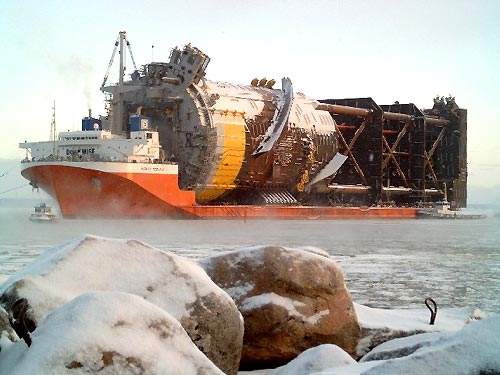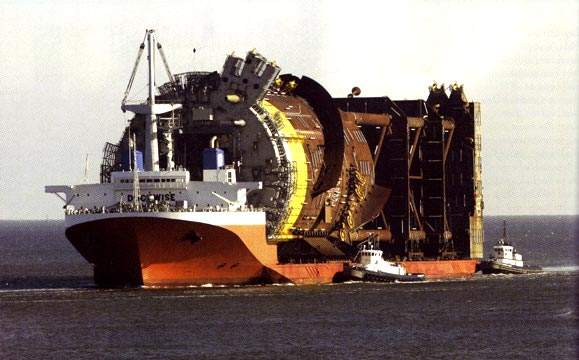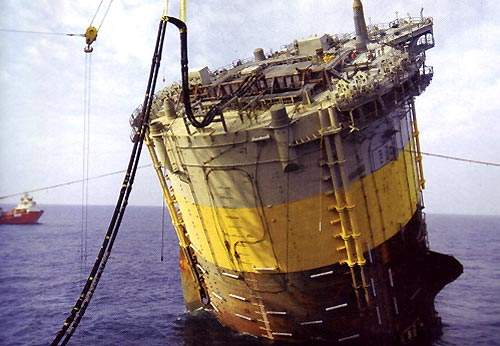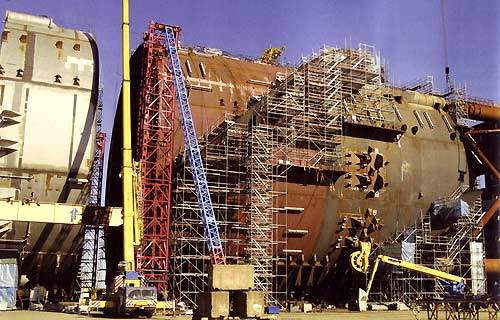The Mad Dog field is located in Western Atwater Foldbelt, Gulf of Mexico, approximately 190 miles south of New Orleans, USA. The nominal water depth is 4,500ft and the field runs along the Sigsbee Escarpment. The field is operated by BP, which has a 60.5% share, BHP Billiton 23.9% and Chevron 15.6%.
The drilling unit is located in 5,000ft to 7,000ft of water in Green Canyon blocks 825, 826 and 782, about 150 miles southwest of Venice, Louisiana. The gross estimated reserves are in the range of 200 to 450 million barrels of oil equivalent.
The discovery well, in water depths of approximately 6,600ft, was spudded in May 1998 in Green Canyon 826 and was drilled to a measured depth of 22,410ft.
The discovery was followed by a 1999 well drilled to a total depth of 22,410ft and a further successful appraisal well in February 2000.
The project was sanctioned in 2001 and oil production from the field started in 2005. The facility can produce around 80,000bopd and 60mscfd. Mad Dog’s pre-drilled wells were drilled by the Ocean Confidence.
The Mississippi fan fold belt is characterised by basinward-verging anticlines and associated thrust faults. Mad Dog is one of a number of discoveries occurring in the western portion of the fold belt, where shallow salt tongues have flown over some of the folds, making seismic imaging difficult.
Extension well
A well extending towards the southern region of the field known as ‘Mad Dog Southwest Ridge” was drilled in March 2005. The well was appraised in July 2009. Drilling results identified around 280ft of hydrocarbons at Miocene sand and an oil column of over 2,200ft.
The well is named as 826-5 and is situated at block 826 around 100 miles south of Grand Isle. It lies at a water depth of 5,100ft.
In 2008, another well known as A-7 extending towards the western region of the field identified a hydrocarbon column over 2,500ft and 275ft of net pay.
Mad Dog development
The field is being developed by 12 wells produced with a single-piece truss spar permanently moored in 4,500ft water depths in Green Canyon Block 782, 306km south of New Orleans.
The fabrication of the spar hull commenced in Finland in July 2002, and the topsides in Morgan City, Louisiana, one month later.
Topside facilities
The deck measures 220ft by 163ft by 50ft (67m x 50m x 15m) and was designed around the heaviest hook load available (around 8,000t).
The host facility includes production facilities with 16 slots in a 4 x 4 pattern (13 production slots, a drilling riser slot and two service slots), and quarters for 126 personnel, although the temporary quarters can accommodate an additional 60 persons.
The spar also has a BP-owned drilling rig with an operating weight of 5,500t.
Hull and spars
The 20,800t hull measures 128ft in diameter and is 555ft long. The facility is designed to process approximately 100,000 barrels of oil and 60mscf of gas per day.
The spar has a maximum operating payload capacity of around 18,500t excluding hull storage. The topside and integrated decks total 10,500t.
The truss spar took three weeks to travel from Finland to Passagoula, Mississippi, on the Mighty Servant 1, where it was floated off and pre-assembly preparations were completed. The Thialf was then used to lift the topsides into place.
Mooring details
The spar is moored by an 11-line taut mooring configuration. There are three mooring line groups – two with four lines and one with three.
The polyester mooring lines are attached to suction piles, resulting in a saving of around 1,000t of buoyancy over rope and chain systems. It is the first such use of synthetic moorings approved by the US Coast Guard or MMS.
Oil and gas pipelines
Oil from the project is transferred to Ship Shoal 332B through Caesar pipeline. BP has 25% share in the Caesar pipeline.
Further, from Ship Shoal 332B, oil is transported via Cameron Highway Oil Pipeline System internally.
The gas from the project is exported to Ship Shoal 332A platform through the Cleopatra pipeline, which is 22% owned by BP. Further, the gas is transported from the platform to Manta Ray Gathering System and then to Nautilus Gas Transportation System into Louisiana.
Both Caesar and Cleopatra pipelines are part of the BP-operated Mardi Gras Transportation System.










